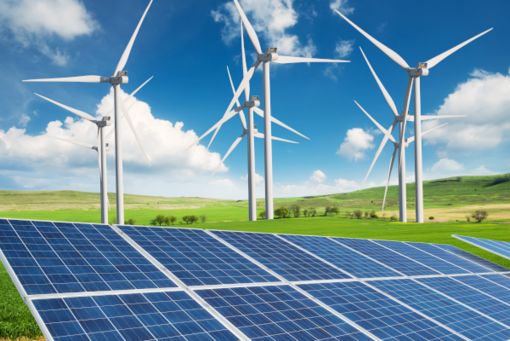Thematic Investing

Renewable energy: power to conserve the earth
March 2023 | 3 minute read | Marketing Communication
You’ve probably heard it called lots of different names: clean energy, green energy, sustainable or alternative energy. It’s most often and most clearly referred to as renewable energy; but what is it?
| "Put simply, renewable energy is electricity or gas that comes from a source that naturally replaces (renews) what is used without harm to any of its resources"
|
"The world cannot become carbon neutral without renewable energy. Demand for heat and power is only increasing as the planet’s populations grow and create more cities and associated commerce"
|
"We are making steady progress, developing, among other things, batteries that can store energy for later use, and smart grids that can match demand with supply and power sources in real time. These new technologies are helping to bring renewable prices down" |
Put simply, renewable energy is electricity or gas that comes from a source that naturally replaces what is used without draining its resources. The most well-known forms are wind and solar power – the sun will still shine and the wind will continue to blow after they generate energy – but there are more.
The other main forms include hydro energy, which harnesses the power of water and tidal energy, drawing on the movements in our seas and oceans. There is also geothermal energy, which comes from the earth’s core, and biomass, produced from living organisms such as plants, animal remains and waste.
What’s the point?
Two things unite these renewable energies. First, they are infinite – they won’t run out. Second, using them to power our industries, businesses and homes generates little or no carbon emissions. This makes them viable alternatives to fossil fuels such as coal and oil, which as well as being finite emit large amounts of carbon when they are burned.
This is vitally important because carbon is the main greenhouse gas that, trapped in the atmosphere, is creating global warming and, in turn, leading to dramatic shifts in climate patterns, including flash floods, forest fires and droughts.
World leaders, supported by business and other organisations, have come together in an effort to slow climate change. Together, they have set a target of having zero carbon emissions by 2050 and limiting the increase in the world’s temperature to 1.5 degrees Celsius compared with pre-industrial levels1.

How do renewables fit in?
The world cannot become carbon neutral without renewable energy. Demand for heat and power is only increasing as the planet’s populations grow and create more cities and associated commerce. However, as the world reduces its reliance on polluting fossil fuels, investing in the provision of renewable alternatives means that the sun, wind, water, and other sustainable sources, can step in.
Renewables were responsible for 29% of global electricity generation in 2020, up from 27% the previous year, according to the International Energy Agency, which said that the growth was driven by a 23% increase in solar power and a 12% rise in the contribution from wind2. The IEA believes that it is possible that renewables could account for 90% of electricity generation by 2050, but only through unprecedented levels of investment, starting immediately2.
Resolving the pitfalls
There are other problems to overcome.
For solar and wind, power generation can be intermittent, exceeding requirements when the sun is scorching and the wind howling, but undershooting when it’s cloudy or still.
We are making steady progress, developing, among other things, batteries that can store energy for later use, and smart grids that can match demand with supply and power sources in real time. These new technologies are helping to bring renewable prices down and crucially, to improve reliability of the grid.
No stopping
The momentum driving the world’s move to renewable energy, as a central way to meet our zero-emission targets, is unstoppable. Underpinned by stronger regulation, government support, and the increased desire of business to play its part, the race is on and the time to act is now.
Sources
Amundi Asset Management as at March 2022. [1] The Paris Agreement, adopted 2015. [2] IEA, Renewable 2021 - Analysis
Important Information
Unless otherwise stated, all information contained in this document is from Amundi Asset Management S.A.S. and is as of March 2023. Diversification does not guarantee a profit or protect against a loss. The views expressed regarding market and economic trends are those of the author and not necessarily Amundi Asset Management S.A.S. and are subject to change at any time based on market and other conditions, and there can be no assurance that countries, markets or sectors will perform as expected. These views should not be relied upon as investment advice, a security recommendation, or as an indication of trading for any Amundi product. This material does not constitute an offer or solicitation to buy or sell any security, fund units or services. Investment involves risks, including market, political, liquidity and currency risks. Past performance is not a guarantee or indicative of future results.
Date of first use: March 2022
Doc ID: 2029141
You might be interested in

Acting now for the Climate's Future
We believe it’s the steps we take that are important. A small move forward might be for a household to recycle more or use less water and disposable plastic. A bigger one could be to switch to renewable energy or start driving an electric car.

Video: Climate Action
Nobody can turn back time. But everyone can shape the future. Question consumer decisions, reduce your own CO 2 footprint or invest sustainably.